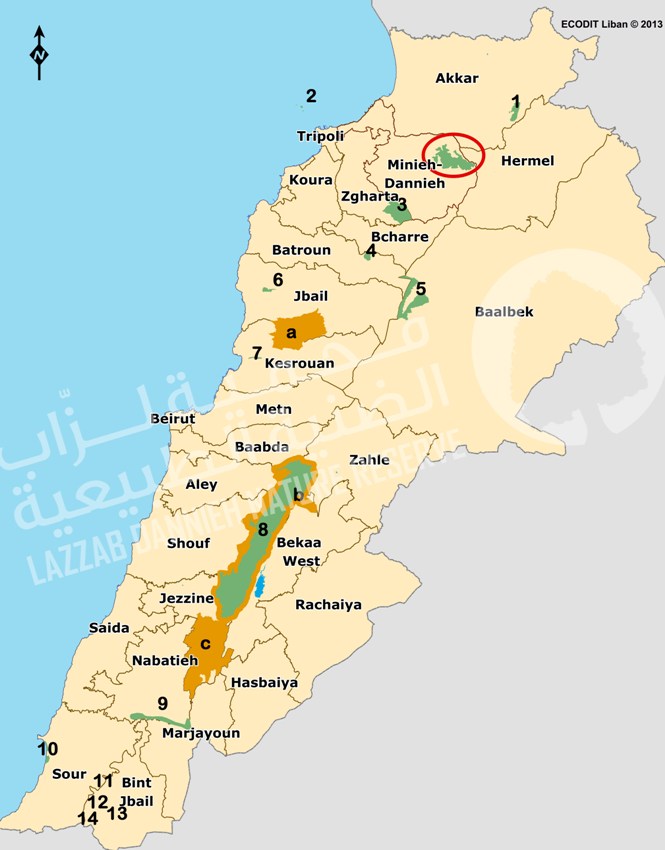Lebanon has 14 legally established nature reserves covering 2.2 percent of the territory. The management and operation of nature reserves is a shared responsibility between the Ministry of Environment, the Appointed Protected Area Committee and the Management Team of the Nature Reserve.

| Nature Reserve | Establishment Year | Approximate Area (ha) | Elevation Zone (meters) | Website |
|---|---|---|---|---|
| 1. Karm Chbat | 1995 | 520 | 1,400-1,900 | |
| 2. Palm Islands | 1992 | 500 | Sea Level | |
| 3. Horsh Ehden | 1992 | 1100 | 1,200-1,900 | www.horshehden.org |
| 4. Tannourine Cedar Forest | 1999 | 150 | 1,300-1,800 | www.arztannourine.org |
| 5. Yammouni | 1999 | 1,600 | 1,400-2,000 | |
| 6. Bentael | 1999 | 200 | 250-800 | www.bentael.org |
| 7. Mashaa Chnaniir | 2010 | 200 | 500-530 | |
| 8. Shouf Cedar | 1996 | 16,000 | 900-2,000 | www.shoufcedar.org |
| 9. Wadi Al Houjair | 2010 | 1,300 | 250-400 | |
| 10. Tyre Coast | 1998 | 400 | Sea Level | |
| 11. Kafra | 2011 | 40 | 400-600 | |
| 12. Beit Lif | 2011 | 20 | 500-600 | |
| 13. Debel | 2011 | 25 | 400-600 | |
| 14. Ramiya | 2011 | 20 | 400-600 |
In addition to these nature reserves, the number of other types of protected areas has also increased including three UNESCO biosphere reserves (measuring 414 km², almost 4% of the territory)
| UNESCO Biosphere Reserve | Date | Caza | Website |
|---|---|---|---|
| a. Shouf Biosphere Reserve | 2005 | Shouf | www.shoufcedar.org |
| b. Jabal Moussa Biosphere Reserve | 2009 | Kesrouan | www.jabalmoussa.org |
| c. Jabal el Rihane | 2009 | Jezzine |
